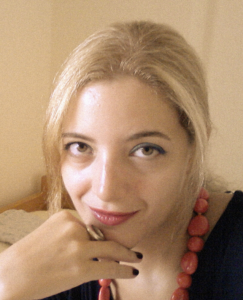
2012, Lebanon
Much is needed in order to implement full gender equality in the Middle East / Western Asia, or at least expand existing spaces of equality. Below are few recommendations:
1) First, extensive researches in the past of this region’s societies would shed a light on current diversity and gender management. A central finding is the need to pursue investigation of history and of a range of case studies, both focused on specific regions and on issues emerging from them. These materials could serve the networks of individuals fighting for gender equality directly and serve as teaching materials in both training programs and at universities. There is a need for more comprehensive, on-the-ground research and mapping of the status, situations and works of women – see first-rate social scientific studies of what is actually happening in the so-called invisible realms, conducted by women standing in some critical but positive relationship to the traditional religious community. Interdisciplinary work has particular importance. Women (and men) from several different sectors need to be included in this process of analysis, while looking at all the sources of wisdom – i.e. the three levels, activist, practitioner, and theoretical, but there is a need to bring them together to get to another level of understanding of what is being done and what could be done… Cooperation needs also to take place not only across different sectors, but also between different types of people. Those further removed from positions of power still have much to contribute. Even within the same community of faith, there are many differences in the way women understand their religious tradition. Age, personal experiences, ethnicity, race, are also categories that may play an important role for the construction of identity of women. Understanding these differences and constructively managing these complexities are critical for a sound theoretical perspective.
2) A deconstruction of Orientalist studies and Orientalist/post-colonial feminism should be done, thus providing a strong rationale for the burgeoning historical and anthropological research that claims to be going beyond stereotypes of Western Asian societies and gender relations. Scholars like Edward Said and others have sought through ethnographic or social historical research to reveal the complex realities of gender and women in Western Asia, or, through literary study, to explore how women represent themselves. In books like the 1965 ‘Guests of the Sheikh’, Elizabeth Warnock Fernea pioneered the sympathetic portrayal of women behind the veil. Further, Fernea’s work to translate and publish Western Asian women’s writings, in books beginning with ‘Middle Eastern Muslim Women Speak’ (with Basima Berzigan), published around the same time as Said’s ‘Orientalism’, has made available to new audiences the many voices of women in this region of the world. Whereas in the 1960s and early 1970s, research and scholarly writing on women focused on questions of role and status, the late 1970s marked an important shift. Homa Hoodfar’s 1997 ‘Between Marriage and the Market: Politics and Survival in Cairo’ claims that this author turns stereotypes about women, Islam, and the MENA in general’. And indeed, this extraordinary rich books shows the resourcefulness of lower-class women in Cairo. Documenting with insight the strategies people use, whether in work or marriage to cope with the economic shifts entailed by the structural adjustment policies the government has adopted, the author offers perceptive analyses of the manipulations of gender ideologies and religious beliefs. Judith Tucker’s 1998 ‘In the House of the Law: Gender and Islamic Law in Syria and Palestine’ is a detailed and lived study based on jurist’s legal opinions and the Islamic court records of Damascus, Nablus, and Jerusalem. Written by one of the pioneers of Western Asia women’s social history, the book subtly argues that although Islamic legal doctrines were based on female/male differences, judges opted in practice for broader and more flexible interpretations based on a desire for justice and for the stability of the community. Arguing against an essential and rigid association of Islamic law with patriarchy, Tucker concludes that it is only in recent times, when law became codified and linked to the state, that there developed ‘the enshrinement of gendered right and privilege without the accompanying flexibility and judicial activism that had been the hallmark of Islamic justice. It is important to remind oneself that although negative images of women or gender relations in the region are certainly to be deplored, offering positive images or non-distorted images is a first step towards the production of knowledge.
3) Networks between women and men should be deployed. Networks as practical sources of support and, more broadly, as a source of inspiration and a way to amplify voices and contribute to an “adding up” of women’s efforts. Networks highlight range from highly focused efforts that address specific regions to broader networks that aim at a general sharing of experience and reinforcement of community. Women very often feel alone and isolated. They are not aware that they are not the only ones caught in seemingly impossible situations. People emphasize that they draw both strength and inspiration, as well as specific support, from networks that link individuals across geographic regions. New social media open means and channels that offer significant potential. Networking can build bridges between generations, communities, organizations, and individuals. By creating broad networks of people who support each other, it is easier to work towards common goals, brainstorm new ideas, and collectively advocate for change.
4) There should be supporting work to challenge theological approaches that exclude or downplay women. In several faith traditions, important changes in women’s roles and thus in their potential to work for peace centers on intra-faith work that challenges through theological dialogue the assumptions and teachings that have negative effects on women. Also, doing theology presupposes committed action, involvement, participation in some form of struggle, a task, in which the more reflective aspects of theology are practiced, tested and lived. Therefore, women in Western Asia are called to do theology, to embark on a pilgrimage toward feminization and affirmation of the validity of women’s perception of religious reality, definition of the world, reading of history and interpretation of human experience. Through women doing theology, integration could be brought into this discourse, which means questioning dualisms and dichotomies in most theological traditions in Western Asia: body-spirit, darkness-light, weak-strong, emotional-rational… When we look at these dualisms, we discover that the tendency is for women to be stereotyped as body, darkness, weak, emotional. By asserting recognition and participation in the mainstream of not only theological discourse but in community building as well, women could promote full humanity. Finally, women can help liberate men from a purely male perspective of history and put theology at the service of the people’s struggle for justice and peace, as long as their perspective is liberational.
5) Conscious efforts to work towards greater strategic focus in the work of women emerge as a common concern. There are so many effective grassroots initiatives that do not get a fraction of the resources they merit; there are marvelous UN declarations that do not really deliver; there is excellent research coming out of university peace departments; there are even great initiatives on the part of governments, but all these are fragmented and do not work together as joint stakeholders in the building of gender equality. It is suggested here that women have to do more than just look for ways to work in what is perceived to be ‘traditionally acceptable roles’. Much stands in the way. Women’s human rights have been declared negotiable because of local custom (“We’ve always done it this way.”) or local culture (“Women’s rights are a Western concept”). But, tradition in itself is a process of constructions and deconstructions, movable dynamics of a diversity of perceptions, rules and applications.
In a time where most societies in Western Asia are molding/re-molding their national identities, searching for a sense of unity and belonging to a nation, it is necessary to have an understanding of oneself as located in a temporally extended narrative, encompassing all diversities, including gender diversity. In order to be able to locate one as such, nationalist discourse must be able to represent the unfolding of time in such a way that the nation assumes a privileged and valorized role of diversities. The objective is not to build a memory – thus history and identity – which performs a totalizing function, subsuming the complexity and immanent contradictions of social and political life under a naturalized, reified and yet ever-elusive category. On the contrary, memory, history and identity have to be understood and built within a framework of a multitude of human interactions. Thus, it is an endless adventure, far from a comforting embrace. Minerva’s owl has not yet flown, and we are yet to catch sight of the elusive dusk.
